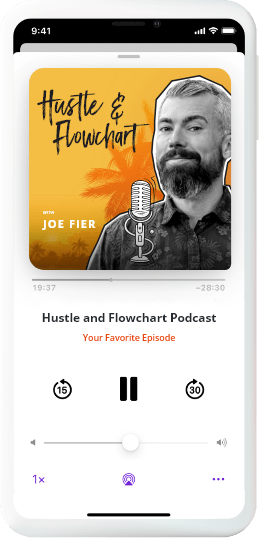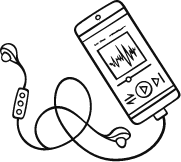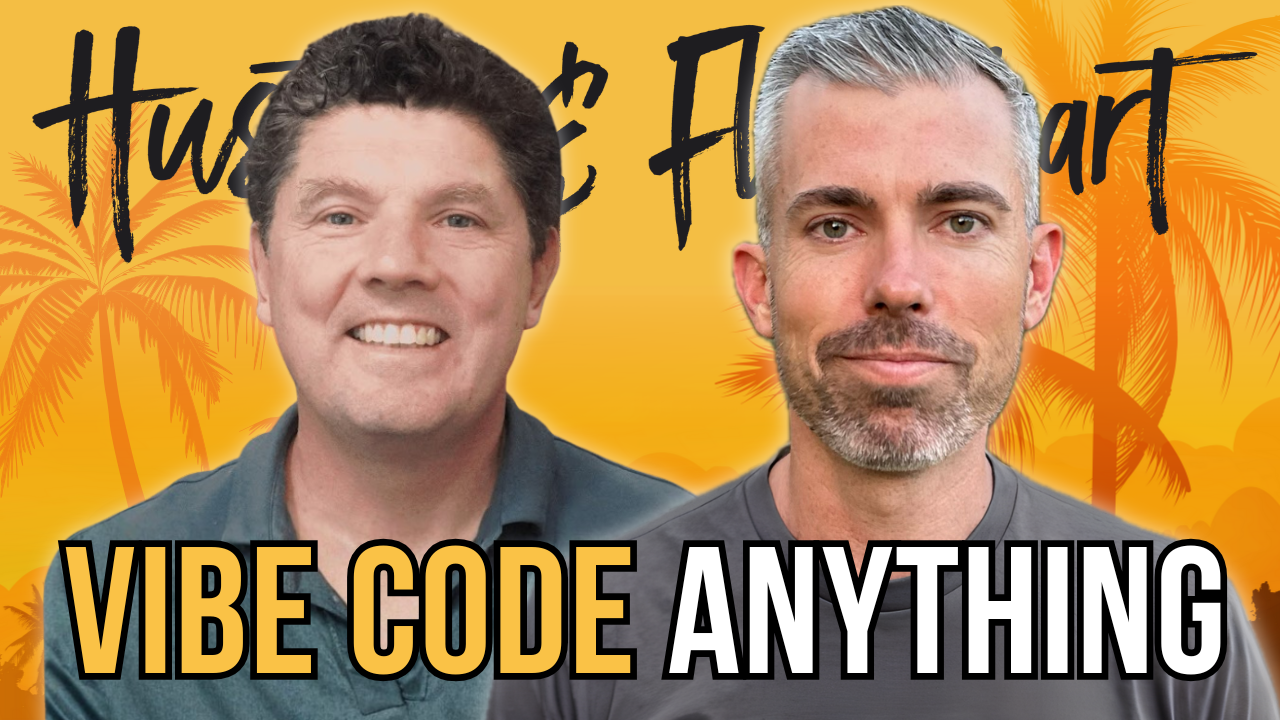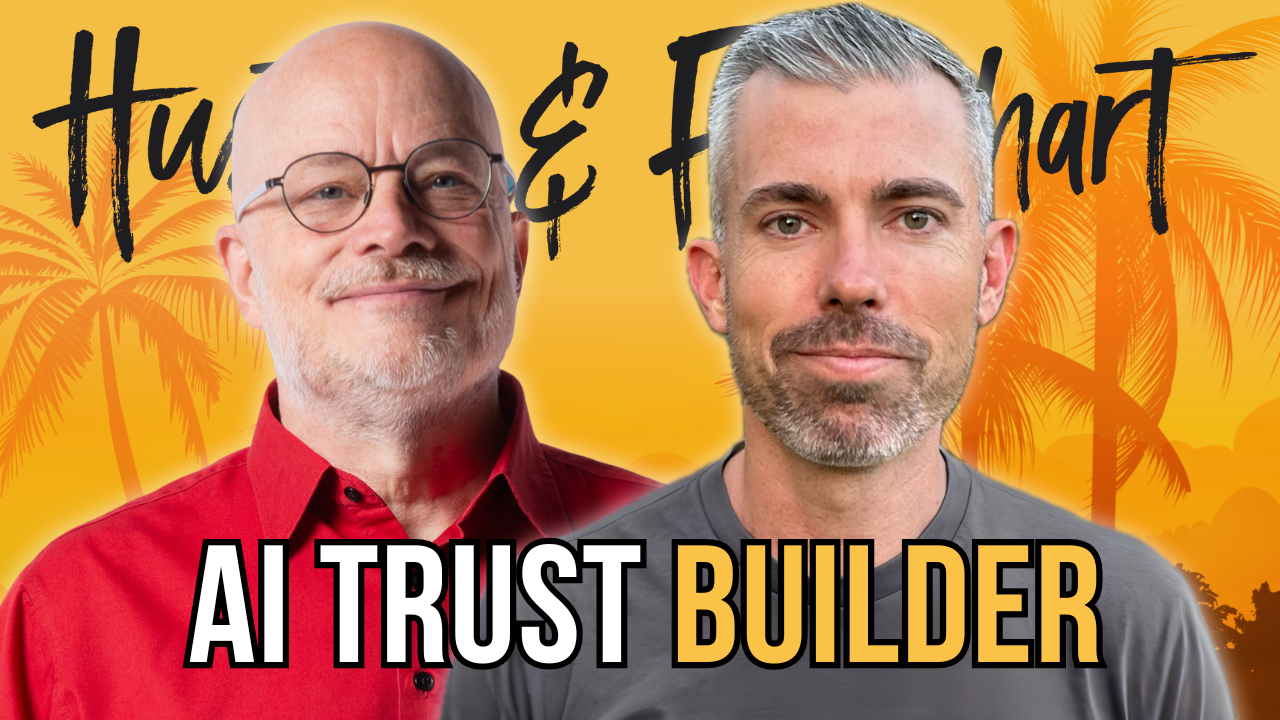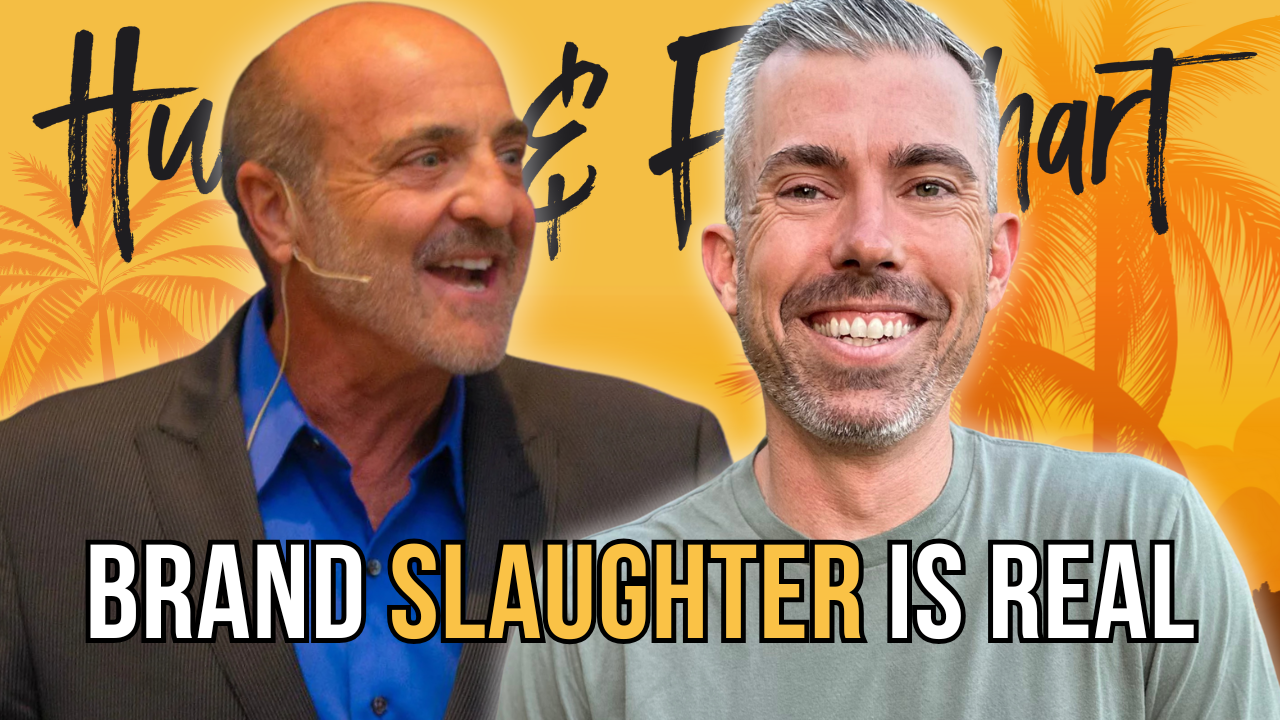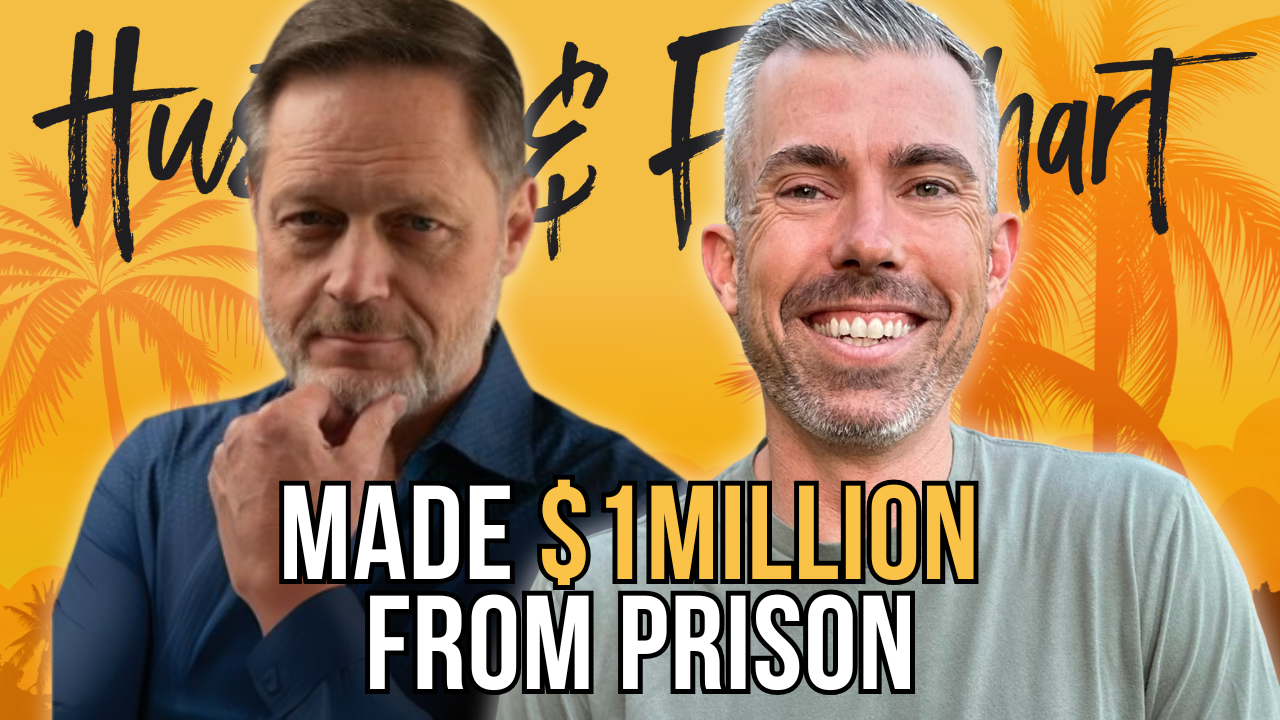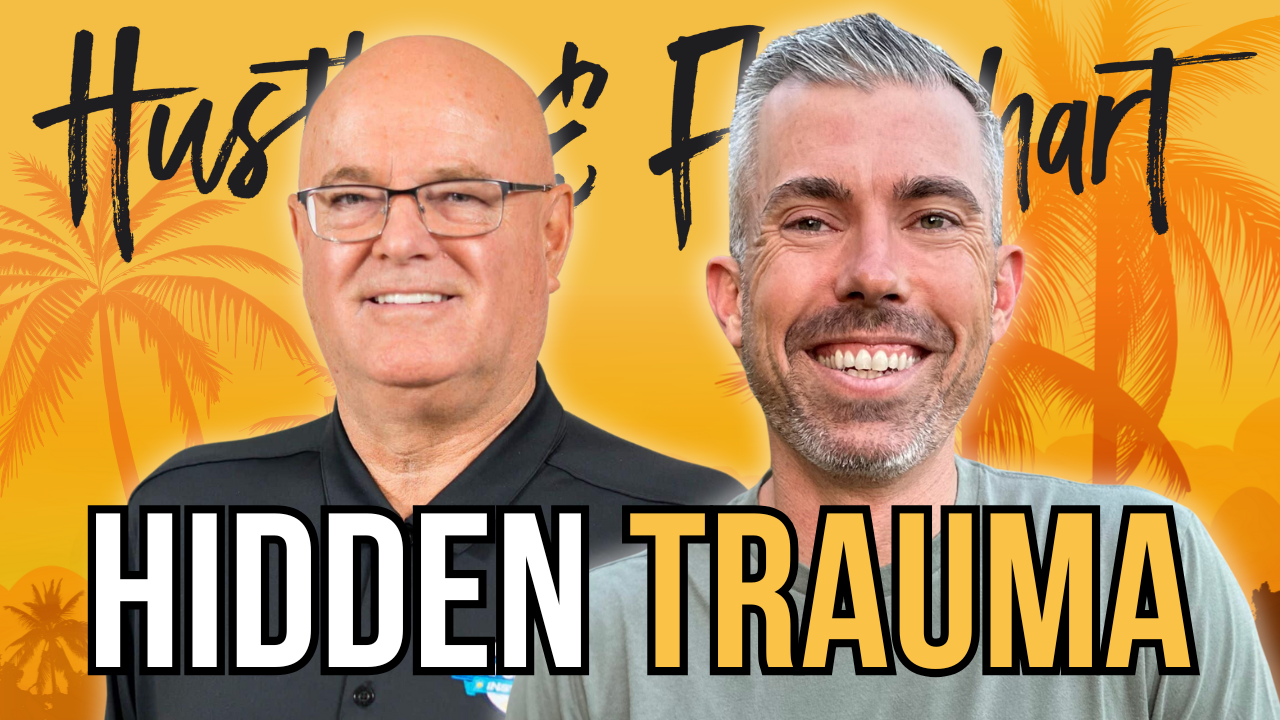AI is changing the Internet and how people find websites. Smart business owners want to make sure their websites are not “broken” or left behind as search engines and digital marketing keep changing. I (Joe Fier) asked Greg Merrilees, the founder of Studio 1 Design and a leader in web design, to join me on the podcast to share the most important tips for websites in today’s world. Greg covers the biggest changes he’s seen over the years, the impact of AI, and the actions every business should take if they want their website to actually get results.
Find out what matters most for a website right now, from design to trust building to conversion. Greg breaks it all down with practical tips and simple advice we can all use, whether we run a personal brand or a company. We talk about the smart use of lead magnets, how AI search has changed traffic, why website copy should be shorter, and the power of new tools like Delphi and Microsoft Clarity. This summary will help you spot what to fix and improve on your website, so you can stand out and get more sales.
Table of Contents
ToggleHow Website Traffic and Trust Are Changing
Businesses once needed to funnel as much cold traffic to their websites as possible and convince visitors to take action through long pages of copy and trust signals. AI-driven search and social platforms now “warm up” audiences before they get to a site. Most visitors today check out brands on social media, YouTube, and even platforms like LinkedIn before visiting your actual website.
Greg pointed out that “just in the last year, AI search is stealing everybody’s website traffic.” Rather than relying on people randomly finding your site, businesses now need to focus on their unique message — their “North Star” — and spread it across every platform.
Trust is built before the user arrives, so your website now needs to focus on leading warmer visitors to clear next steps. Businesses should ensure the website gives clarity, shows why they are the best choice, and lets people take action easily, rather than trying to convince cold traffic with extra-long sales copy. Greg said it best: “If the traffic’s majority warm, you just need to lead them to the next step in the funnel — get a sales call or buy something — because they’re pretty warm most of the time these days.”
Key Points:
- More people learn about your brand before reaching your website.
- Warmer traffic means your copy can be shorter and funnels should be simple.
- Always show what makes you different — your “North Star.”
- Update your website to sync with social and other platforms.
The Five Main Principles of a Conversion-Focused Website
Greg’s new book, “Next Level Website Design,” boils down years of knowledge into five principles:
- Understanding the audience
- Brand positioning
- Marketing strategy
- Psychological influences
- Conversion-focused design
Understanding the Audience: A great website starts with knowing exactly who your visitors are, what they want, what problems they face, and why they buy from you instead of someone else. Tools like AI can comb through testimonials and reviews to spot what makes people choose you.
Brand Positioning: Good positioning means you stand out from competitors. Greg suggests looking at competitor sites and customer feedback to find that unique angle — “zig where your competitors zag.”
Marketing Strategy: Each visitor to your site could be cold, warm, or hot. Cold visitors need more trust and information; warm and hot traffic just need a clear next step. Interactive tools and lead magnets work much better now than old-school PDFs.
Psychological Influences: People buy with emotion and justify with logic. Your copy should speak to both pain points and desires, use clear authority and social proof, and remove friction. Less is more: “If I had more time, I would have written less copy.”
Conversion-Focused Design: A website must look professional, match your brand’s value, have a logical flow, be easy to use, and give clear calls-to-action.
How AI Changes Website Strategy and Design
Greg and I agree that new AI tools can quickly create basic websites — but there’s a “sea of sameness,” with too many sites looking alike and lacking personality. Tools like Replit and Cursor let you build fast, but if you want something that stands out, you still need real design and developer input.
AI should not replace creativity or strategy. Greg’s team designs custom, non-template sites in Figma and then tries to use AI code tools to speed up development, but they still end up needing a developer for the last 30–40%. “If you want unique, you need to do more than vibe code.”
AI can help with audience research, finding positioning unique points, and summarizing testimonials to spot trends. But the “human element” — tone, voice, personalized copy, and emotional design — matters more than ever.
Key Points:
- Most AI website builders create generic designs.
- Still need creative direction and real designers for unique brands.
- You can save time with AI tools, but not skip the human touch.
Tools and Tactics To Upgrade User Experience
Greg and I discussed several tools that help websites convert better and make user experience smoother:
- Microsoft Clarity is a free tool that shows heatmaps and video recordings of how visitors use your site. It even has AI to summarize user behavior and find friction points. “This is a must-have for anyone serious about fixing conversion issues.”
- Hotjar is another heatmapping tool, great for deeper insights, with extra features like user polls.
- Delphi is an interactive AI chat tool you can add to your website. Instead of just static chats, it lets users have a conversation with an AI trained on your own unique content, knowledge, and voice.
Greg now uses Delphi as a new kind of lead magnet — visitors can chat (or even call) with “AI Greg,” who answers questions using the knowledge from his book, podcast appearances, and client work. This builds trust instantly, saves time, and gives every visitor value without needing Greg to be on the call.
Key Points:
- Use Microsoft Clarity for free, actionable user data.
- Add an interactive AI (like Delphi) to give visitors fast, helpful answers and automate trust building.
- Reduce friction — make it easy for people to contact or interact with you.
Useful Links:
The Power of Interactive Lead Magnets
Old-school lead magnets, like downloadable PDFs, are less effective now. Greg recommends interactive tools — simple widgets, calculators, or quizzes built with basic code or platforms like Vibe Code — because users get instant results tailored to their needs (without having to read a long ebook).
For example, Greg’s team made an “AI Greg” interactive tool that gives fast website audits. Businesses can clone this tactic for their brand: turn expertise or processes into interactive web tools that build trust and get leads.
People “want to personalize whatever they’re doing and get immediate results,” and interactive lead magnets provide exactly that.
Key Points:
- Interactive tools get more engagement than PDF downloads.
- Quick, personalized results build trust and help more people take the next step.
- You don’t need tons of content — 10,000 words is enough for a powerful Delphi AI assistant.
Why Your Website Is Never “Finished”
No website should be treated as a set-and-forget project. User habits change, traffic channels shift, and what works today won’t work next year. Greg insists on ongoing conversion optimization:
“Your website’s never finished — you have to constantly test new magnets, new funnel steps, new strategies because your audience and competitors both change over time.”
Greg’s process includes pairing Microsoft Clarity and Google Analytics with form, sales, and email data to see where leaks or problems appear. He tweaks lead magnets, landing pages, and main navigation every month based on this data. Even the best websites need regular updates to stay ahead.
Key Points:
- Track user behavior and keep updating based on real data.
- Review main funnels, forms, CTAs, and lead magnets often.
- Competition and user needs change quickly, especially with AI.
Practical Action Steps for Better Websites
Greg recommends this step-by-step plan for anyone with a website:
- Perform a Google (or AI tool) search for your service, your name, and your location — see what yourself and your competitors look like in search and AI snippets.
- Check your website for clarity: “Does it clearly explain what you do, why people should trust you, and what to do next?”
- Make your “contact us” and core calls-to-action easy to find and use.
- Add interactive lead magnets or AI chat tools for trust and instant value.
- Use free tools like Microsoft Clarity to spot where users get stuck.
- Regularly review and update testimonials, trust badges, and case studies.
- Focus on your unique angle — your “North Star” — across every platform and page.
- Treat your homepage as a gateway, with multiple clear paths, but all other pages should have one main call-to-action.
Connect with Greg Merrilees
AI has changed how people find and trust businesses online. Websites must now be clear, quick to build trust, and easy to use. Greg Merrilees shared that the key to website success is sticking to core principles: know your audience, stand out, keep your design clean, and always keep improving.
Interactive tools, smart use of AI, and trust magnets like testimonials should be at the heart of every website. Track what your users do, keep updating based on data, and make sure your site is set up to give visitors what they want right away. Your website will never be done, but by following these steps and using these tools, your business can stay ahead — no matter how much AI changes the web.
Two Other Episodes You Should Check Out
- How to Beat Google, ChatGPT, and TikTok At Their Own Game! – Jason Barnard
- The AI Gold Rush: Most Entrepreneurs Are Failing—Here’s What Only 0.8% Understand! – Scott Duffy
Connect with Joe Fier
- What if you could have a FREE personal mentor on-demand?! With Joe's Hustle & Flowchart AI clone, you can tap into the knowledge from over 600 episodes any time! Whether you need advice on scaling, marketing, or productivity, my AI clone is here to help.
- Want us to build your clone for you? We’ll handle setup, testing, and integration so you can launch fast. Head to HustleandFlowchart.com/interest to get started!
- Hubspot has launched a whole new suite of AI Tools, check them on the Hubspot.com
- Check out other podcasts on the HubSpot Podcast Network
- We want to hear from you. Send us the One Thing you want to hear on the show.
- Connect with Joe on LinkedIn and Instagram
- Subscribe to the YouTube Channel
- Contact Joe: joe@hustleandflowchart.com
Thanks for tuning into this episode of the Hustle & Flowchart Podcast!
If the information in these conversations and interviews have helped you in your business journey, please head over to iTunes (or wherever you listen), subscribe to the show, and leave me an honest review.
Your reviews and feedback will not only help me continue to deliver great, helpful content, but it will also help me reach even more amazing entrepreneurs just like you!







